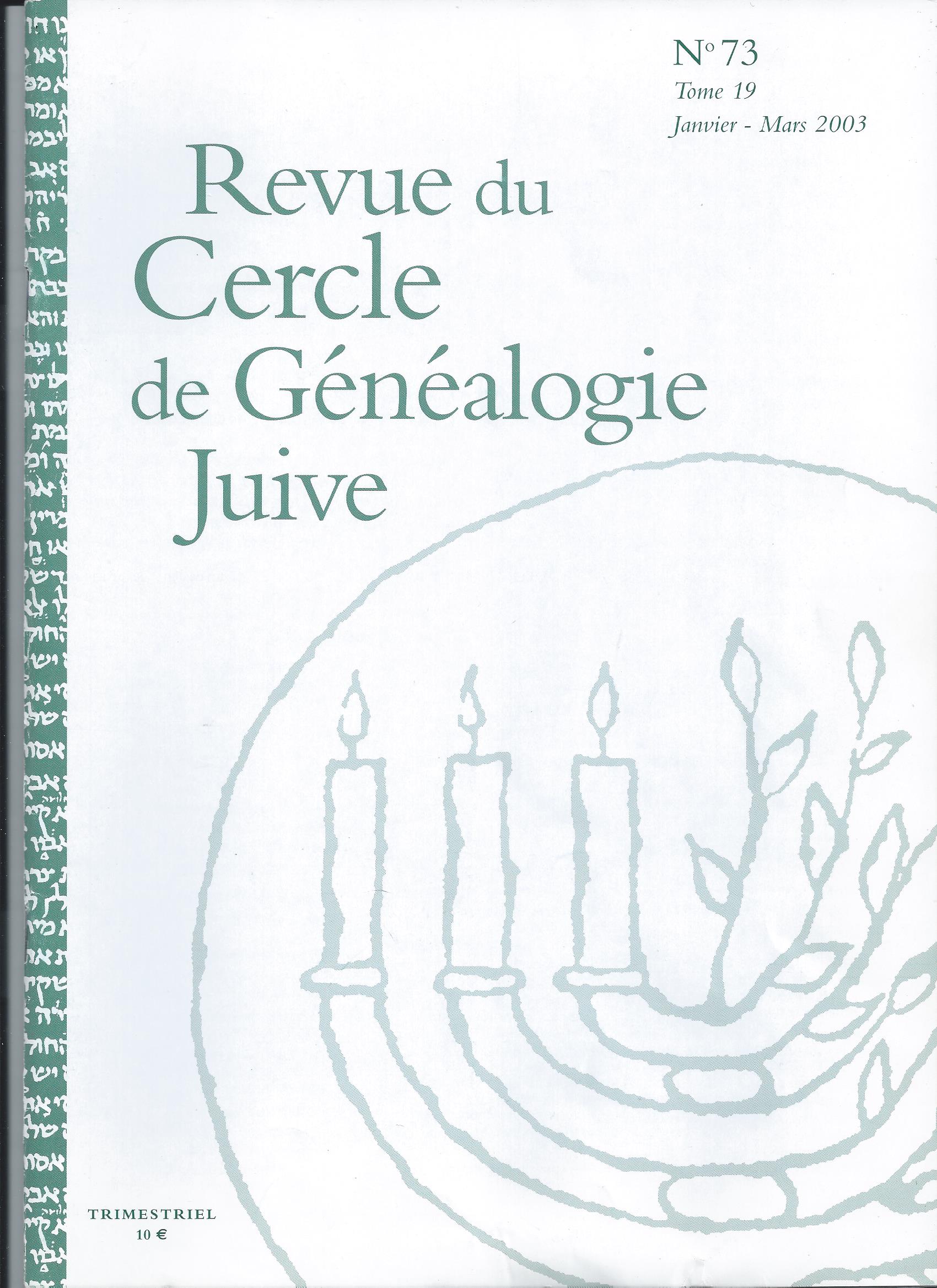OUR SOCIETY'S LIFE FAMILIES Origin and dissemination of the family name Gugenheim (part 3). John E. Berkovitch The third and last part of this contribution presents an outline of the Gugenheim family tree covering about eleven generations, extending from the early XVth century to the period of the French Revolution. The first four generations precede the adoption of the surname by a Joseph (ca.1555-1615), native of Frankfort on the Main, who made at least one stay in a locality formerly named Gugenheim (today Jugenheim), situated 25 km southwest of Mainz. No reference whatsoever supports the hypotheses, frequently put forward, which tie the origin of the surname to either of two similarly named localities at the time, one northwest of Strasbourg, the other south of Darmstadt. The children and grandchildren of this Joseph settle primarily in the region of the middle Rhine valley, especially in and around Francfort, Bingen and Worms. The following generations scatter over Western Germany, Switzerland, Alsace and Lorraine. At the time of the French Revolution, the surname can be found from Hamburg in the North to Aargau in the South, and from Berlin and Vienna in the East to Metz in the West.
A ketubah from Avignon in the Cecil Roth collection in Toronto
Max Polonovski
This document can be be linked by no family relation whatsoever to the ketubot of families in Nîmes, originating in Carpentras, previously analyzed in issues 67, 69 and 70 of Revue du CGJ. It comes from Avignon,records the marriage of Jassuda de Saint-Paul and his cousin, Liotte de Saint-Paul, on Friday, Nisan 13, 5514 (April 5, 1754) and obeys the usual rules of the contracts in this region. It bears twelve signatures, the authors of which are all identified. MISCELLANEOUS J'ai du bon tabac (a popular French rhyme), says Mr. Henle Eliane Roos-Schuhl
The author describes the tobacco pot, presently in the Museum of Israel, of El'hanan Henle, a jeweller from Fürth and deciphers its inscription. The given name Nethanael prompts her to search its origin as well as the origin of the father's name in this case. This leads to the history of the town Fürth anof its Jewish population, and to the portrait of significant outstanding individuals from the Henle and Dispeck families. Family trees illustrate the text.
Death certificates in the Paris Departement Archives, for Jewish soldiers and officers in the Armies of the French Revolution and Empire Pierre Lautmann
The author continues preparing a dictionary of the Jewish military personnel in the Armies of the French Revolution and Empire. He has discovered a new source of information in the Paris Département Archives : their death certificates. He describes the files he has found, connects their data with those of other sources, and intends to exploit similar documents from the other Departement Archives.
RECENT EVENTS -Georges Graner describes the new features of the CGJ website.
-Eliane Roos-Schuhl reveals her discovery of a Dutch mohelbuch, hidden in a book filed in the library of the Alliance Israélite Universelle in Paris.
-Nicolas Roth urges the readers to fill, if not yet done, Yad Vashem Pages of Testimony and underscores the plus which genealogy adds to a personal testimony. OUR LIBRARY BOOK REVIEW - Odette CARASSO : a biography of Arthur Meyer (1844-1924), newspaper tycoon, Jew, royalist and anti-Dreyfus, Paris, 2003.
-Michèle BITTON : Outstanding Jewish women in France during the XIXth and XXth centuries, 2003.
-Lucien LAZARE (dir. Israel GUTMAN) : The dictionary of French Righteous among the Nations, Fayard, Paris, 2003. . PRESS REVIEW QUESTIONS AND ANSWERS |

